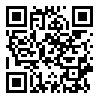2- Cultivation and Development Department of Medicinal Plants Research Centre, Institute of Medicinal Plants, ACECR, Karaj
3- Department of horticulture, Science and Research branch, Islamic Azad University, Tehran
4- Institute of Medicinal Plants, ACECR, Karaj , Naghdibadi@yahoo.com
Background: Considering the importance of using new technologies such as nano-technology the sustainable agriculture, and increase the yield and quality of crops, research in this direction is necessary.
Objective: In this study was investigated the effect of foliar application of nano-iron and potassium chelate fertilizer on yield and quality of psyllium.
Methods: In this research, the factorial experiment in a randomized complete block design with 12 treatments and 3 replications was carried out. The treatments of this experiment were consisted of three levels of nano-iron chelate (0, 1 and 2 g.L-1) and four levels of nano-potassium chelate (0, 2, 3 and 4 g.L-1) fertilizer.
Results: The interaction of nano-iron and potassium chelated fertilizer treatments had a significant effect on the seed yield (P<0.01) and shoot dry weight (P<0.05). The independent effect of nano-iron and potassium chelated fertilizer were significant on themost traits (P<0.01), number of seeds per plant, and yield of mucilage (P<0.05). Interaction of 2 g.L-1 of nano-iron and 3 g.L-1 of potassium chelate fertilizer treatments, and also their independent effects had the most impact on the measured traits, especially yield of shoot dry weight, seed yield, mucilage content and yield of mucilage.
Conclusion: According to the results, the use of nano-iron and potassium chelate fertilizer had positive effects on the efficiency of psyllium.
Received: 2014/12/22 | Accepted: 2015/03/4 | Published: 2015/12/1
| Rights and permissions | |
 |
This work is licensed under a Creative Commons Attribution-NonCommercial 4.0 International License. |




